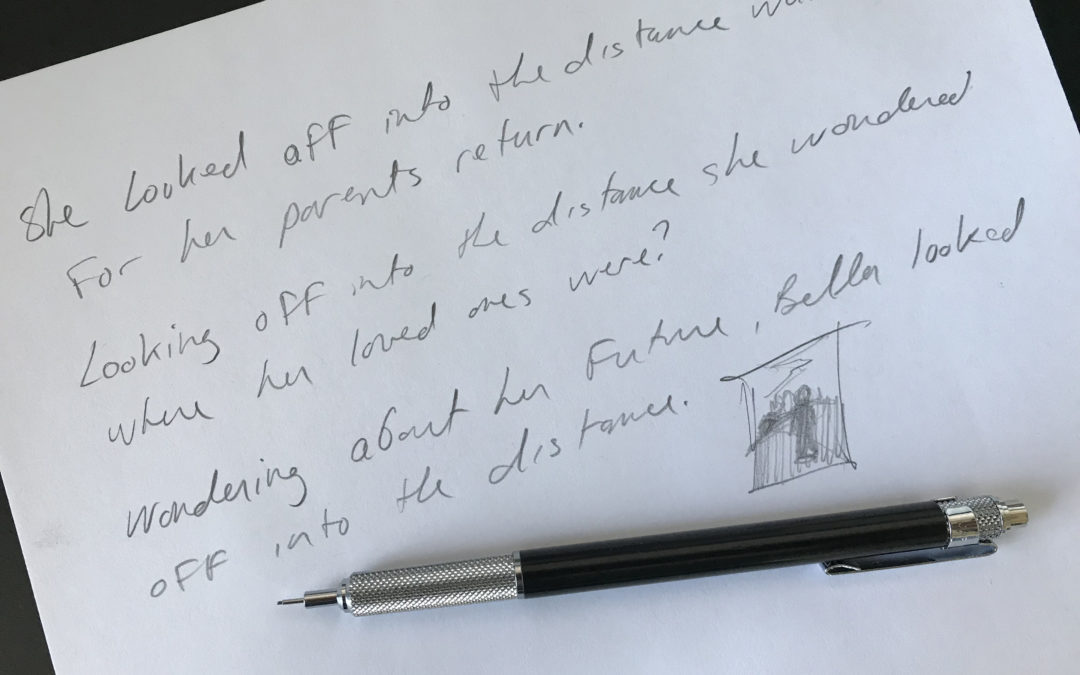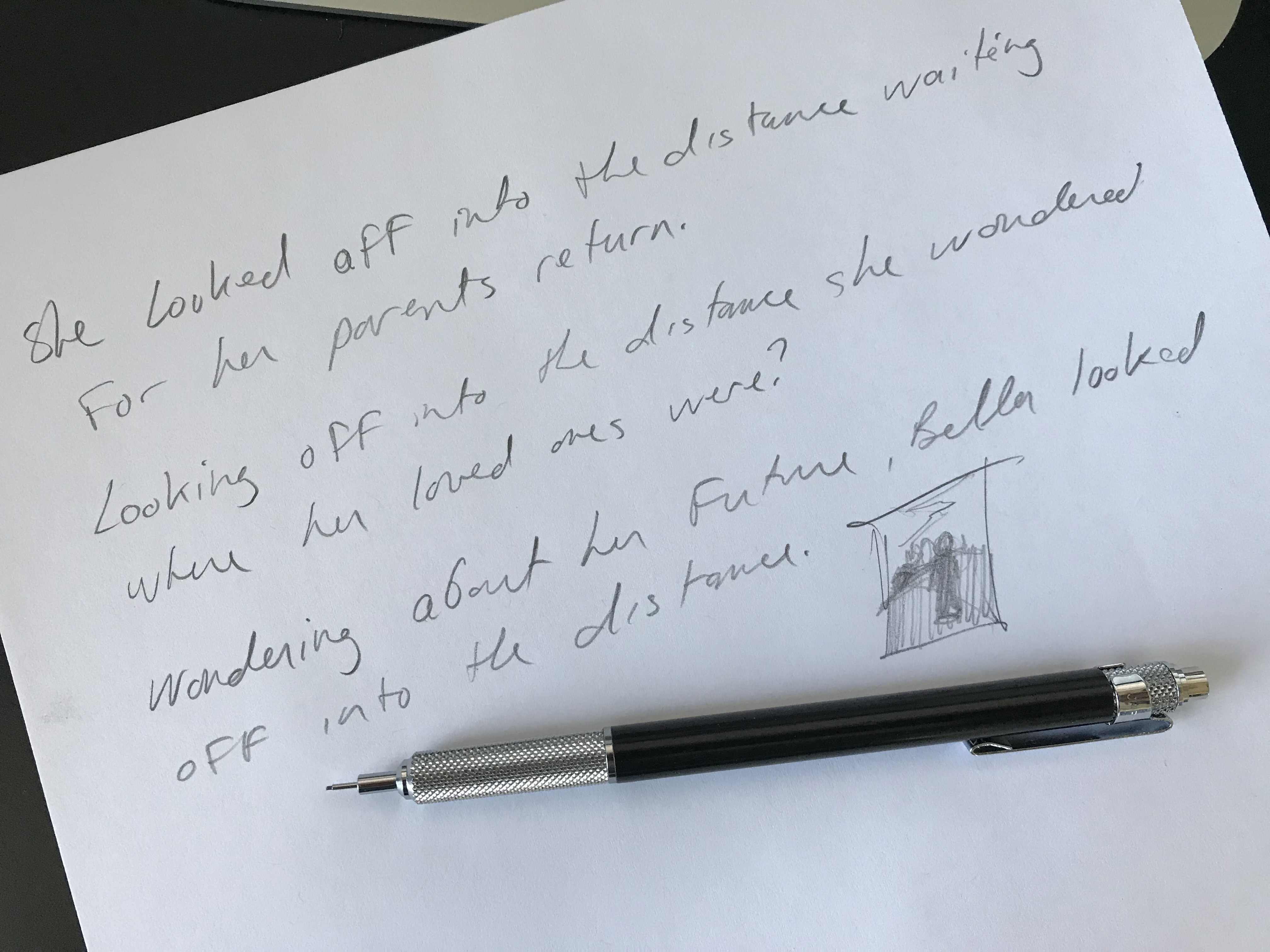I just recently finished up Lesson Two – Inspiration for my new Illustration Process course. I love this lesson because it helps to provide the illustrator with clarity.
When we are not clear on what our illustration is all about, the viewer is not clear on what our illustration is all about. That’s a bad thing. Especially if we are trying to tell stories through our art.
In this short lesson I explain to the members of Drawing Tutorials Online three techniques that have helped me to confront a white blank sheet of paper. Have you ever been there before, stuck, with no ideas. I know I certainly have.
One way to fight artist’s block is to simply write a sentence describing what your scene is all about. Writing a sentence will most certainly provide you, your model, the art director and the viewer with clarity.
This has always worked for me. It all evolved from reading manuscripts. When working on illustrating book covers there were usually two ways to get started. Read the manuscript and come up with an idea or, be told what to do by the art director.
Either way included a descriptive sentence of some sort. I like working both ways.
It was always fun to read a manuscript and discover a scene simply from reading a really descriptive sentence. Certain sentences from the manuscript would just click for me. I would have a visual in my mind immediately for what the book cover was going to look like. Ah inspiration to deal with an empty sheet of paper.
After reading many manuscripts over the years I could tell who was a descriptive writer and who wasn’t. Certain authors just had a knack for creating visuals in just a few words.
The other more direct way was being told what to do by the art director. Not much creative freedom, however there was always a sentence where the art director would explain what they wanted on the cover. That was the inspiration.
Now a sentence is just one way to get inspiration for the visual you are trying to create from scratch. What lesson two is all about is finding inspiration that will provide you with clarity on what your visual is all about.
Super important.
I cannot tell you how many times I have asked students what their image was all about. Worst answer, I don’t know. When you show your illustration to someone do they look puzzled as to what they see? Not good.
You can see where I’m going with this. Be clear on what your images are all about. This will allow you to create strong confident illustrations. When you start on a new project, write a sentence describing what the project, scene, illustration, visual is all about.
A strong illustration should convey a story in a second or two. If it doesn’t try writing a sentence for what your image is all about.
It will definitely help with your image making process.


